Understanding ABA Therapy's Role in Nonverbal Communication
Autism Spectrum Disorder (ASD) often presents challenges in communication, especially for nonverbal individuals. Applied Behavior Analysis (ABA) therapy has emerged as a scientifically backed approach that can significantly improve both verbal and nonverbal communication skills. This article explores how ABA therapy is tailored to help individuals with nonverbal communication challenges, the techniques used, and the benefits observed, emphasizing its potential to foster social connection and independence.
The Foundation of ABA and Its Emphasis on Nonverbal Cues
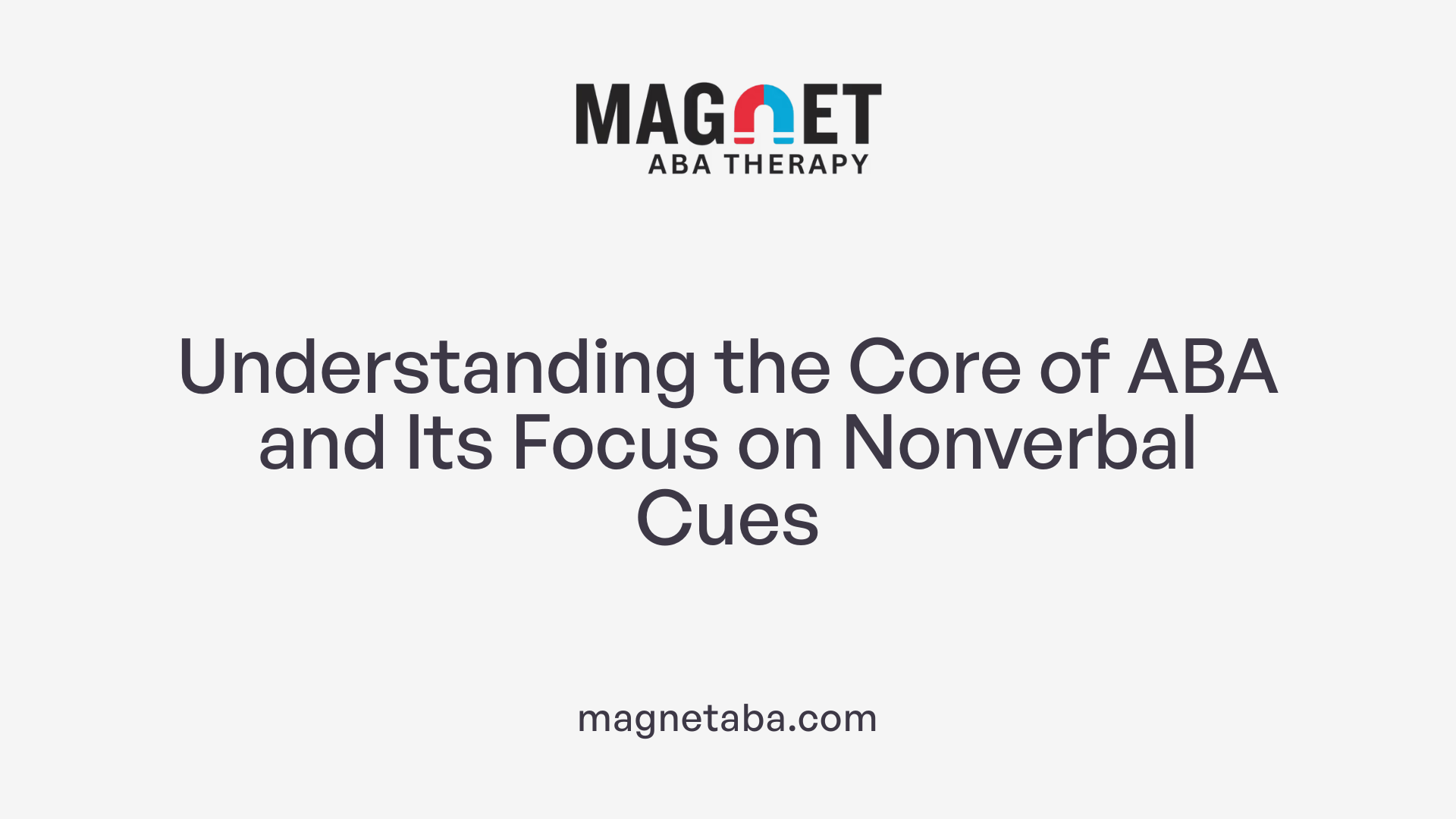
How can ABA therapy assist individuals with nonverbal communication challenges?
Applied Behavior Analysis (ABA) is a well-established therapeutic approach that prioritizes the improvement of communication skills, including nonverbal cues. For individuals with autism who struggle to use spoken language, ABA provides tailored strategies to build alternative forms of expression.
ABA therapy employs techniques like prompting, modeling, and natural environment teaching. These methods help individuals learn to use gestures, facial expressions, eye contact, and body language effectively. For example, therapists might use pictures or sign language to teach a child to request objects or indicate needs.
Augmentative and alternative communication (AAC) devices, such as Picture Exchange Communication System (PECS) or speech-generating devices, are often integrated into therapy sessions. These tools serve as bridges toward more accurate and confident communication.
Therapists assess the child's current abilities, set personalized goals, and develop specific interventions. Reinforcement strategies play a vital role by rewarding successful communication efforts, encouraging the child to practice and generalize these skills across different settings.
Through consistent use of these methods, ABA enhances receptive abilities—understanding social cues and gestures—and expressive skills—using appropriate nonverbal signals to communicate. Ultimately, this results in improved social interactions, decreased frustration, and increased independence in daily life. The approach is evidence-based and adaptable, ensuring each individual receives the support suited to their unique needs, fostering meaningful participation in social and everyday activities.
Techniques and Strategies to Foster Nonverbal Communication
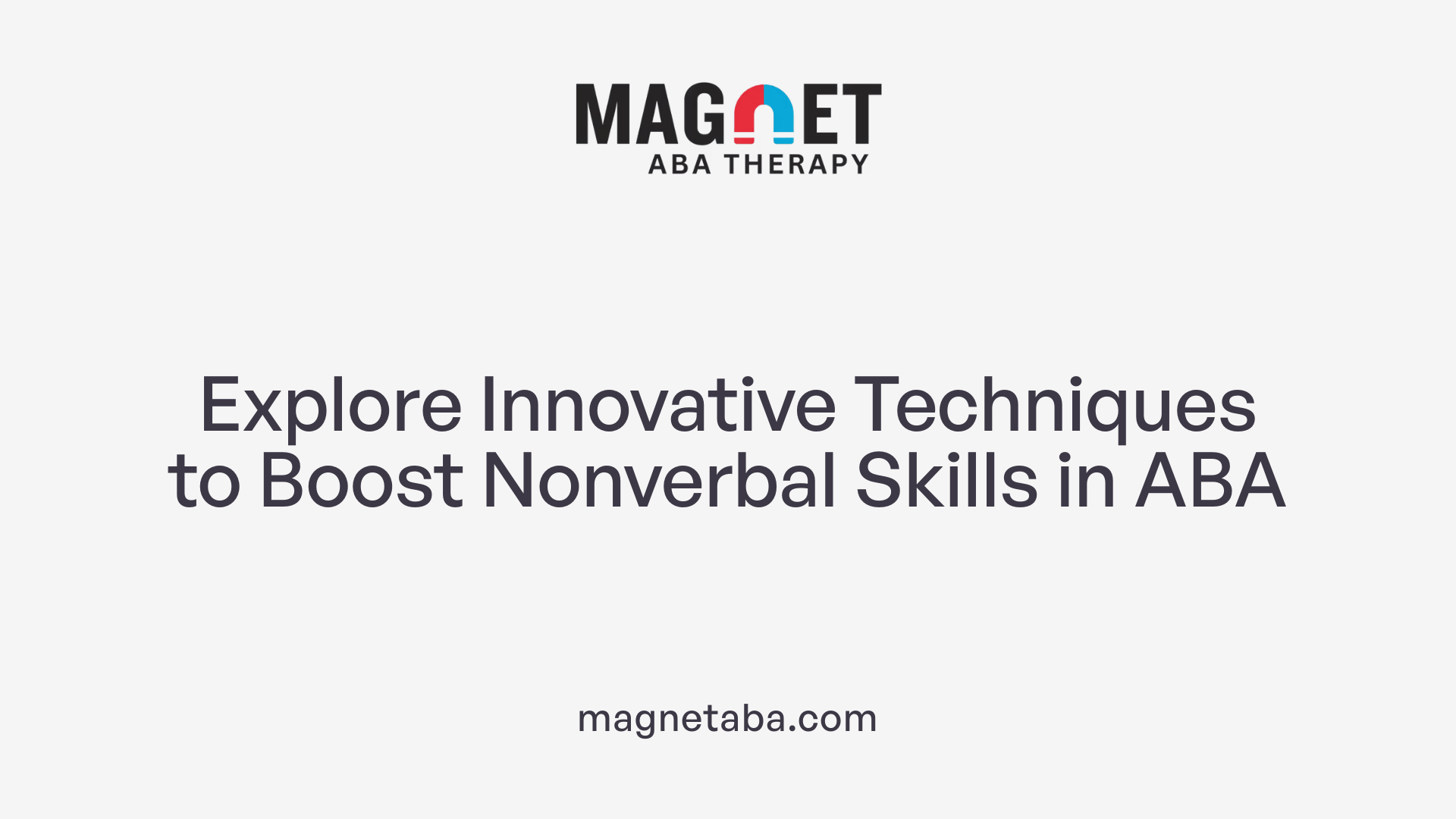
What techniques and strategies are used in ABA therapy to improve nonverbal communication?
ABA therapy incorporates a variety of techniques to strengthen nonverbal communication skills among children with autism. Visual supports such as picture cards, social stories, and visual schedules serve as foundational tools. These visuals help children understand social cues, routines, and emotions, making abstract concepts more concrete.
Promoting receptive and expressive skills is achieved through modeling, prompting, and role-playing activities. For example, therapists might demonstrate how to use gestures or facial expressions, then encourage children to imitate these behaviors. Reinforcement strategies—offering rewards when children successfully use nonverbal cues—encourage ongoing use and mastery.
Teaching basic sign language provides a direct way for nonverbal children to communicate. Additionally, deploying augmentative and alternative communication (AAC) devices like the Picture Exchange Communication System (PECS) and speech-generating devices (SGDs) allows children to express their needs efficiently.
Incorporating naturalistic and child-led activities, such as play and imitation, enhances real-world application of communication skills. These activities create engaging environments where children can practice nonverbal cues like gestures, eye contact, and body language in meaningful ways.
Therapists often collaborate with families to integrate these tools into daily routines, ensuring skills transfer across settings. Overall, these strategies work synergistically within a structured, data-driven framework to foster functional nonverbal communication skills in children with autism.
Benefits for Nonverbal Children with Autism
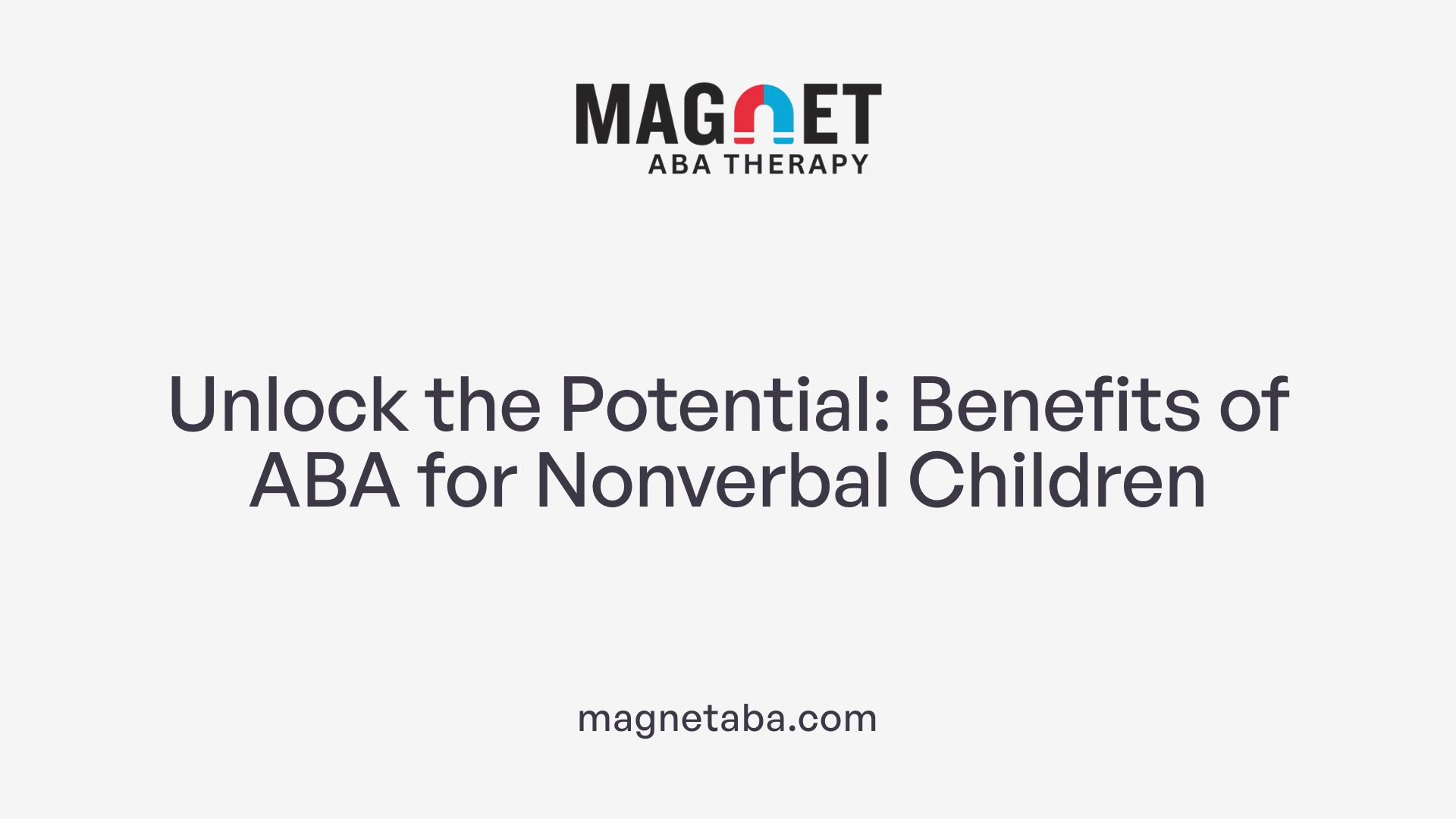
What are the advantages of ABA therapy for children with autism who are nonverbal?
ABA therapy provides numerous positive outcomes for children with autism who are nonverbal. One of its primary benefits is the enhancement of communication skills. Using techniques like visual supports, prompting, and the use of augmentative and alternative communication (AAC) systems such as PECS and speech-generating devices, children can develop ways to express themselves, whether through speech, gestures, or other methods.
In addition to improving communication, ABA helps children acquire vital social skills. They learn to interpret social cues like facial expressions and eye contact, share objects, take turns, and engage in social play. These abilities foster better relationships with peers and adults, making social interactions smoother and more meaningful.
Reducing challenging behaviors is another important benefit. ABA identifies the functions of disruptive actions, teaching children suitable replacements. For example, rather than tantrums or self-injury, children learn to communicate their needs or desires appropriately.
Promoting independence is also a cornerstone of ABA therapy. It targets daily living skills including dressing, eating, hygiene, and routine tasks. Mastery of these skills boosts self-confidence and allows children to participate more actively in everyday activities.
Overall, ABA therapy supports nonverbal children by developing practical communication methods, social understanding, behavior management, and independence, all of which help improve their quality of life and integration into their communities.
Effectiveness of ABA in Developing Communication Skills
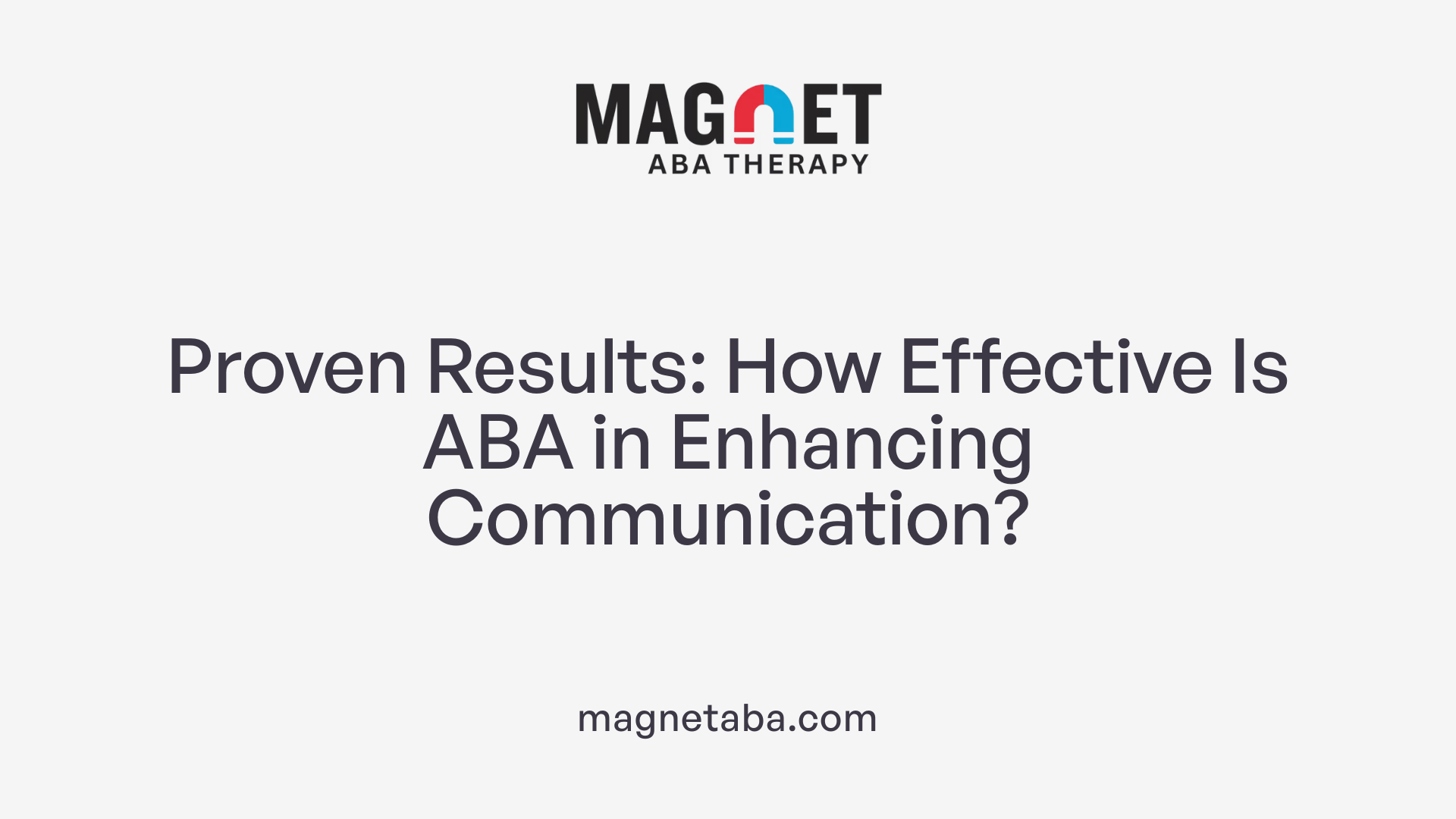
How effective is ABA therapy in promoting verbal and nonverbal communication skills?
Applied Behavior Analysis (ABA) therapy is widely recognized as a highly effective approach for enhancing communication abilities in children with autism spectrum disorder (ASD). This therapy emphasizes individualized plans that are tailored to each child's current skills and needs.
ABA incorporates several targeted techniques to promote communication, including Verbal Behavior Therapy (VBT) and Functional Communication Training (FCT). VBT categorizes language into functions such as requests (mands), labels (tacts), repetitions (echoics), responses (intraverbals), and modifiers (autoclitics). This helps children develop practical, socially relevant language skills.
In addition, ABA uses augmentative and alternative communication (AAC) devices like picture exchange systems (PECS) and speech-generating devices (SGDs). These tools enable children to express themselves effectively, especially if they are non-verbal.
Therapies often involve prompting, modeling, and natural environment teaching to improve understanding and use of nonverbal cues like gestures, facial expressions, and eye contact. Reinforcement strategies encourage desired behaviors, making communication more engaging and rewarding.
Research consistently shows that ABA fosters significant improvements in social skills, emotional understanding, and daily functioning. These gains contribute to better social interactions, increased independence, and enhanced quality of life.
Overall, ABA offers long-term benefits by helping children build the foundation for meaningful relationships and social inclusion, demonstrating its vital role in developing both verbal and nonverbal communication skills in autism spectrum disorder.
Overview of Strategies and Results
| Technique | Focus Area | Typical Goal | Supporting Methods |
|---|---|---|---|
| Verbal Behavior Therapy (VBT) | Language functions | Develop functional speech | Reinforcement, imitation, natural environment teaching |
| Functional Communication Training (FCT) | Communicative acts | Replace challenging behaviors with effective communication | Prompting, modeling, AAC devices |
| AAC Devices | Non-verbal communication | Facilitate expressive skills | PECS, speech-generating devices |
| Reinforcement | Desired behaviors | Increase communication attempts | Preferential rewards, social praise |
Research indicates that ABA not only improves speech and language but also enhances social relationships, leading to a more inclusive and supportive environment for children with ASD.
Developing Language and Communication in Nonverbal Individuals
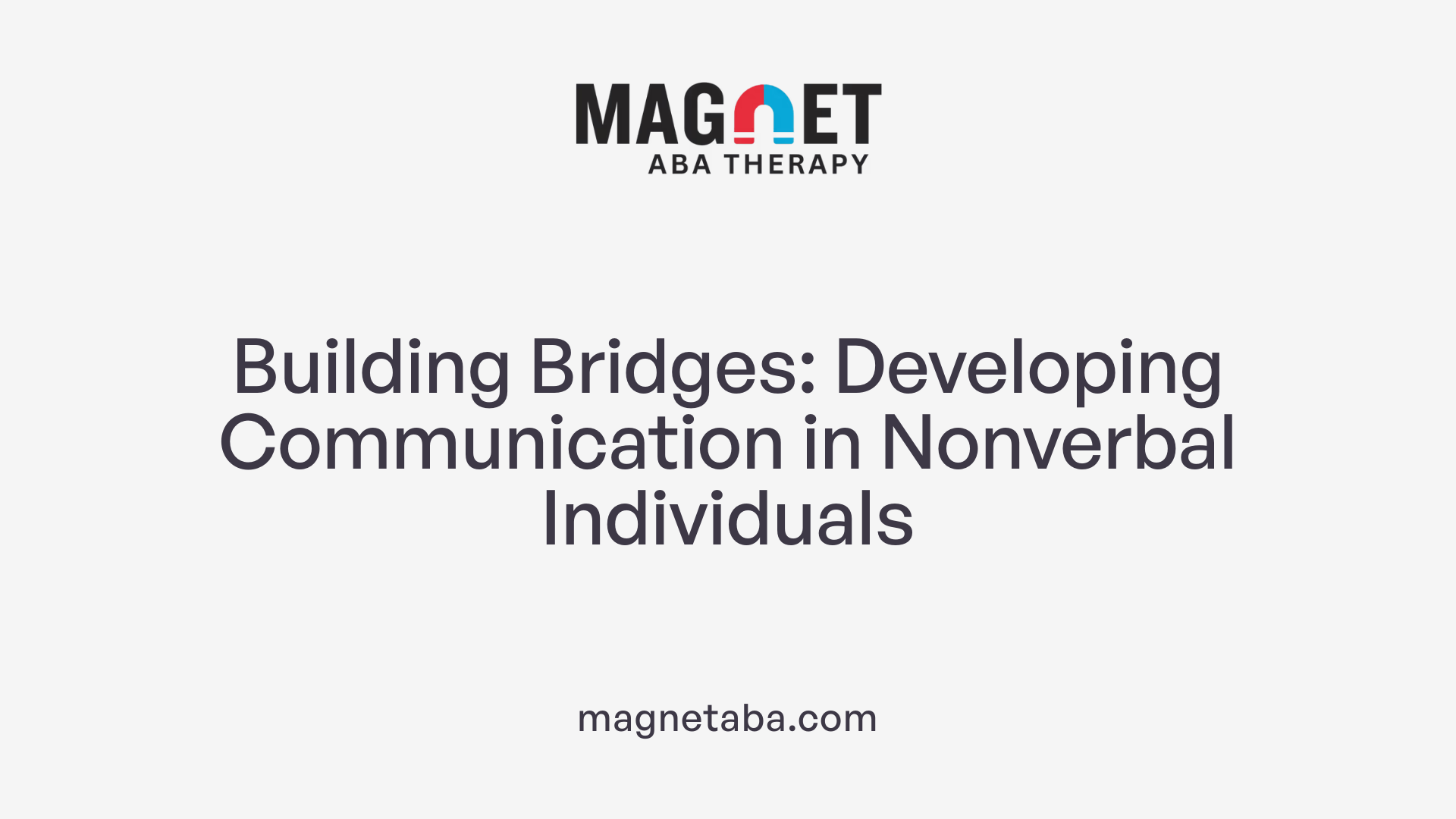
How does ABA therapy develop language and communication skills in nonverbal individuals?
ABA therapy employs a variety of structured, personalized strategies to enhance communication skills among nonverbal individuals with autism. Central to this approach is the development of functional communication through tailored plans that incorporate prompting, modeling, and reinforcement techniques.
Visual supports are integral to these interventions. Tools such as picture exchange communication systems (PECS), visual schedules, and social stories help individuals understand and practice communication cues effectively. These supports substitute for verbal language, offering visual and tangible ways to express needs and desires.
Augmentative and alternative communication (AAC) devices, including speech-generating devices, expand expressive options. They enable individuals to communicate more independently and confidently, which can be a significant step toward verbal speech.
Focusing on nonverbal cues like gestures, facial expressions, eye contact, and body language is crucial. ABA therapists train individuals to recognize and use these cues appropriately, fostering better social understanding.
Imitation exercises and social interaction activities play a vital role. These practices involve mimicking behaviors, engaging in turn-taking, and encouraging eye contact, thereby reinforcing social engagement and basic communication skills.
Video modeling and social skills training are also employed. Through observing and imitating modeled behaviors in videos, individuals learn suitable ways to interact and communicate socially.
Research shows that even children beyond age 4, who primarily do not speak, can acquire functional language skills with persistent ABA interventions. These programs target both receptive understanding and expressive capabilities, leading to improved daily interactions and social participation.
In summary, ABA therapy integrates visual supports, AAC tools, nonverbal cue focus, imitation, and social skill development to help nonverbal individuals progress towards effective communication, ultimately enhancing their quality of life.
Empowering Nonverbal Individuals Through Targeted Strategies
ABA therapy offers a comprehensive, evidence-based approach to supporting nonverbal individuals with autism. By integrating techniques like visual supports, prompting, reinforcement, AAC tools, and social skills training, ABA helps develop functional communication skills that are vital for social interaction, independence, and quality of life. Tailored to each individual’s needs, ABA’s structured interventions foster significant progress, enabling nonverbal individuals to express themselves more effectively and participate meaningfully in their communities. As research continues to validate its efficacy, ABA remains a cornerstone in the effort to unlock communication potential for those most in need.
References
- ABA Techniques: Approaches to Nonverbal Communication in Autism
- How ABA Works on Non-Verbal Children - ATAMIC Therapy
- How ABA Therapy Can Improve Communication Skills in Children
- Making Progress with Nonverbal Autism Through Private ABA ...
- Teaching nonverbal autistic children to talk - Autism Speaks
- ABA Techniques: Approaches to Nonverbal Communication in Autism
- Teaching nonverbal autistic children to talk - Autism Speaks
- How ABA Therapy Can Improve Communication Skills in Children
- Minimally Verbal School-Aged Children with Autism Spectrum ...











